Spirituality is the only key for Human Survival - Part I
'It is already becoming clear that a chapter which had a Western beginning will have to have an Indian ending if it is not to end in self-destruction of the human race. At this supremely dangerous moment in human history, the only way of salvation is the ancient Hindu way. Here we have the attitude and spirit that can make it possible for the human race to grow together in to a single family. So now we turn to India.
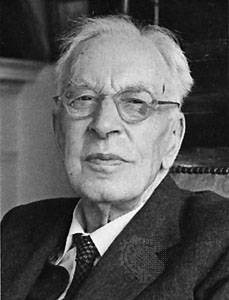 This spiritual gift, that makes a man human, is still alive in Indian souls. Go on giving the world Indian examples of it. Nothing else can do so much to help man- kind to save itself from destruction.... that in the 21st century "India will conquer her conquerors." Arnold Toynbee (A British Historian, 1889-1975)
This spiritual gift, that makes a man human, is still alive in Indian souls. Go on giving the world Indian examples of it. Nothing else can do so much to help man- kind to save itself from destruction.... that in the 21st century "India will conquer her conquerors." Arnold Toynbee (A British Historian, 1889-1975)
Both Abrahamic religions have caused untold misery by killing the nonbelievers, destroying the property, enslaving the people they have conquered, raping the women, occupying the lands forcefully, converting the nations to their respective religions either with force or with deception. In India and elsewhere, Christians authorities have used every trick, deceit and deception to convert gullible and innocent Hindus into Christianity. Their goal is to dismantle the Hindu edifice and erect Christianity. They do not even mind going against their own religious scripture, Bible. Why do they use so many deceptive techniques to convert people? Billions of dollars are pouring into India from many foreign countries. The Christian preachers have to show that they are converting in order to get more and more money from these countries. The Christian Preachers remuneration depends on the numbers game. The more they show the number of converts, the more money they get. Many of these Christians are delusional to think that they go to heaven if they can convert non-Christians to Christianity. This delusional thinking and greed to make more money would make the Preachers to smack and slap their own Bible and the teachings of their only savior Jesus. They use such method as deception, deceit, force, manipulation, allurement, tricks, treachery, exploitation, violence, killings, educational 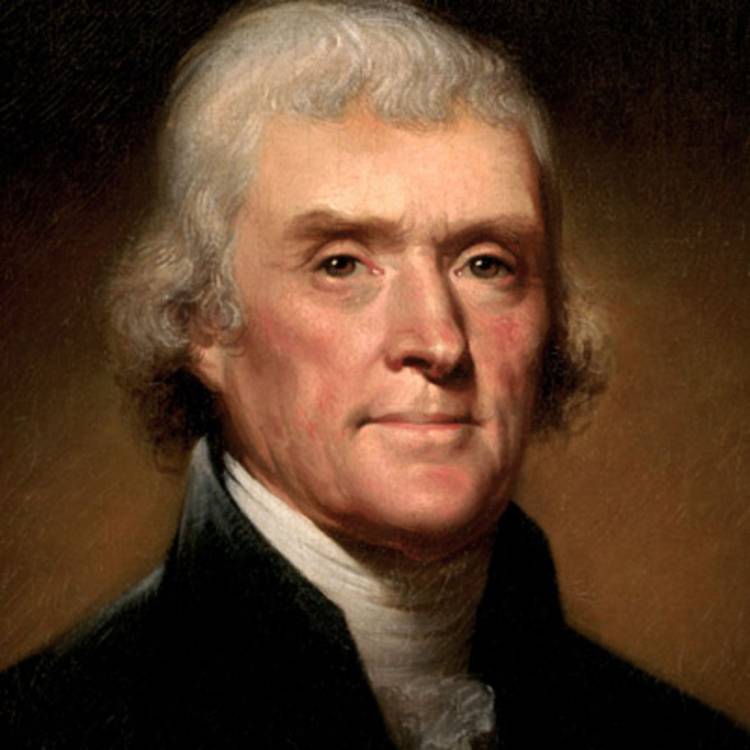 indoctrination, defame other religions, demean other gods, denounce other scriptures, sexual exploitation and the list goes on. Thomas Jefferson, the third President of the United States stated, “Millions of innocent men, women and children, since the introduction of Christianity, have been burnt, tortured, fined, imprisoned; yet we have not advanced one inch towards humanity. What has been the effect of coercion? To make one half of the world fools, and the other half hypocrites. To support error and roguery all over the earth.”
indoctrination, defame other religions, demean other gods, denounce other scriptures, sexual exploitation and the list goes on. Thomas Jefferson, the third President of the United States stated, “Millions of innocent men, women and children, since the introduction of Christianity, have been burnt, tortured, fined, imprisoned; yet we have not advanced one inch towards humanity. What has been the effect of coercion? To make one half of the world fools, and the other half hypocrites. To support error and roguery all over the earth.”
Islamic brutality on Hindus was unmatched in the annals of human history. It is bigger than the holocaust of Jews by the Nazis and also much bigger than the massacre of the Armenians by the  Turks. According the estimates that as many as 60 million Hindus were massacred by Islamic rulers. Actual numbers could be very well up to one billion. Every Islamic ruler made hills of Hindu skulls to outnumber the previous rulers. In Afghanistan, Hindu Kush mountain has seen more blood and brutality. Will Durant has argued in his 1935 book “The Story of Civilization: Our Oriental Heritage” that “The Mohammedan conquest of India is probably the bloodiest story in history. The Islamic historians and scholars have recorded with great glee and pride the slaughters of Hindus, forced conversions, abduction of Hindu women and children to slave markets and the destruction of temples carried out by the warriors of Islam during 800 AD to 1700 AD. Millions of Hindus were converted to Islam by sword during this period.” (P:459). Since Independence, the atrocities have not declined as the Hindu population reduced to almost nil in Pakistan from nearly 18 percent and to about 6 percent from nearly 24 percent in Bangladesh. Muslim population is increasing day by day in India and with the sole purpose of converting India into an Islamic Country. ISIS is formed to establish a new Islamic caliphate across the Middle East. ISIS' desire (and apparent strategy) is to overthrow the existing governments of unstable, heavily Muslim nations and establish their own theocratic state in its place. They have spread all across the globe to establish Islam though force and terror. The German writer and journalist Jurgen Todenhofer, who actually did the unthinkable and spent 10 days in the Islamic State as the Caliph's guest, says that the IS wants to kill "all non-believers and apostates and enslave their women and children. All Shiites, Yazidi, Hindus, atheists and polytheists should be killed . . . Hundreds of millions of people are to be eliminated in the course of this religious cleansing. All moderate Muslims who promote democracy should be killed [as well]. Because, from the IS perspective, they promote human laws over the laws of God."
Turks. According the estimates that as many as 60 million Hindus were massacred by Islamic rulers. Actual numbers could be very well up to one billion. Every Islamic ruler made hills of Hindu skulls to outnumber the previous rulers. In Afghanistan, Hindu Kush mountain has seen more blood and brutality. Will Durant has argued in his 1935 book “The Story of Civilization: Our Oriental Heritage” that “The Mohammedan conquest of India is probably the bloodiest story in history. The Islamic historians and scholars have recorded with great glee and pride the slaughters of Hindus, forced conversions, abduction of Hindu women and children to slave markets and the destruction of temples carried out by the warriors of Islam during 800 AD to 1700 AD. Millions of Hindus were converted to Islam by sword during this period.” (P:459). Since Independence, the atrocities have not declined as the Hindu population reduced to almost nil in Pakistan from nearly 18 percent and to about 6 percent from nearly 24 percent in Bangladesh. Muslim population is increasing day by day in India and with the sole purpose of converting India into an Islamic Country. ISIS is formed to establish a new Islamic caliphate across the Middle East. ISIS' desire (and apparent strategy) is to overthrow the existing governments of unstable, heavily Muslim nations and establish their own theocratic state in its place. They have spread all across the globe to establish Islam though force and terror. The German writer and journalist Jurgen Todenhofer, who actually did the unthinkable and spent 10 days in the Islamic State as the Caliph's guest, says that the IS wants to kill "all non-believers and apostates and enslave their women and children. All Shiites, Yazidi, Hindus, atheists and polytheists should be killed . . . Hundreds of millions of people are to be eliminated in the course of this religious cleansing. All moderate Muslims who promote democracy should be killed [as well]. Because, from the IS perspective, they promote human laws over the laws of God."
The only solution to this mentality of conquering the humanity by terror and deception to submit to their respective religion, is follow the advice of Toynbee who suggested all the nations to turn to 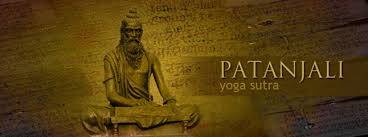 India and embrace the spiritual path couched in the principle of ahimsa. Patanjali Yoga Sutras enumerate five yamas that are considered the codes of restraints, truthfulness, abstain from immoral acts, think of highest reality and no-acquisitiveness. The five niyamas prescribing the virtues such as purity, contentment, controlling the senses, surrender and self-study. By practicing one will be elevated to the path of spirituality allowing one know the true nature of human existence and find the truth (atman) and it is relevant to the higher truth (Paramatma). Patanjali says “Ahimsa pratishtayam tat sannidhau vairatyagaha’’ meaning “When a person is established in non-violence, then violence is dropped in his or her presence.” (2:35). Dropping off these violent behaviors is the need of the hour if the humanity has to prevent itself from self-destruction. As Toynbee stated that the only salvation for the humanity is to turn to India for her spiritual legacy that can prevent the holocausts.
India and embrace the spiritual path couched in the principle of ahimsa. Patanjali Yoga Sutras enumerate five yamas that are considered the codes of restraints, truthfulness, abstain from immoral acts, think of highest reality and no-acquisitiveness. The five niyamas prescribing the virtues such as purity, contentment, controlling the senses, surrender and self-study. By practicing one will be elevated to the path of spirituality allowing one know the true nature of human existence and find the truth (atman) and it is relevant to the higher truth (Paramatma). Patanjali says “Ahimsa pratishtayam tat sannidhau vairatyagaha’’ meaning “When a person is established in non-violence, then violence is dropped in his or her presence.” (2:35). Dropping off these violent behaviors is the need of the hour if the humanity has to prevent itself from self-destruction. As Toynbee stated that the only salvation for the humanity is to turn to India for her spiritual legacy that can prevent the holocausts.
What is Spirituality
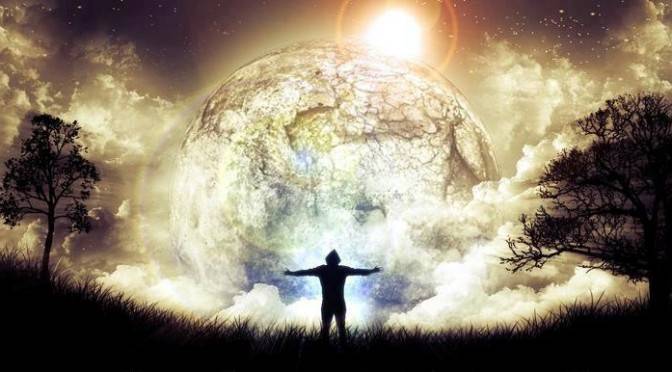 Spirituality is an inward journey that enables us to go beneath the surface of Atma, true self and allows to examine who we are, what we think and we are and guides each of us home to our truest Self. Spirituality is a broad concept with room for many perspectives. In general, it includes a sense of connection to something bigger than ourselves, and it typically involves a search for meaning in life. As such, it is a universal human experience—something that touches us all.
Spirituality is an inward journey that enables us to go beneath the surface of Atma, true self and allows to examine who we are, what we think and we are and guides each of us home to our truest Self. Spirituality is a broad concept with room for many perspectives. In general, it includes a sense of connection to something bigger than ourselves, and it typically involves a search for meaning in life. As such, it is a universal human experience—something that touches us all.
Christina Puchalski, MD, Director of the George Washington Institute for Spirituality and Health, contends that "spirituality is the aspect of humanity that refers to the way individuals seek and express meaning and purpose and the way they experience their connectedness to the moment, to self, to others, to nature, and to the significant or sacred."
According to Mario Beauregard and Denyse O’Leary, researchers and authors of The Spiritual Brain, “spirituality means any experience that is thought to bring the experiencer into contact with the divine (in other words, not just any experience that feels meaningful).”
Nurses Ruth Beckmann Murray and Judith Proctor Zenter write that spirituality is “a quality that goes beyond religious affiliation, that strives for inspiration, reverence, awe, meaning and purpose, even in those who do not believe in God. The spiritual dimension tries to be in harmony with the universe, strives for answers about the infinite, and comes essentially into focus in times of emotional stress, physical (and mental) illness, loss, bereavement and death” (1989:259).
L Kaiser “ … refers to a broad set of principles that transcend all religions. Spirituality is about the relationship between ourselves and something larger. That something can be the good of the community or the people who are served by your agency or school or with energies greater than ourselves. Spirituality means being in the right relationship with all that is. It is a stance of harmlessness toward all living beings and an understanding of their mutual interdependence.” (L. Kaiser 2000)
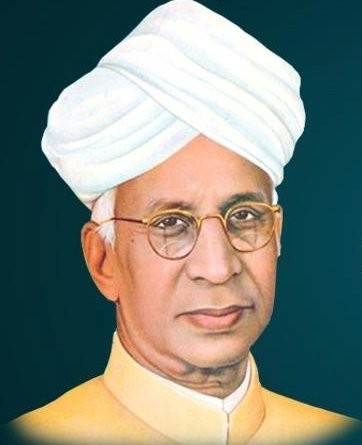 Spirituality is perceived in the context of integrating every segment in the universe to bring about unity – nothing is excluded and everything is included that will bring happiness and harmony. Spirituality involves the integration of three dimensions— knowledge base and belief systems, interior life and inner self, and exterior life and institutional activity. These three domains overlap and interact with each other – one dealing with individual experience, search for inner life and also the external world. Spirituality is the experience of connection to something higher level that transcends our ordinary lives. The most prominent feature of spirituality in Indian culture is the ideal of oneness of all beings in the universe (Radhakrishnan 1929).
Spirituality is perceived in the context of integrating every segment in the universe to bring about unity – nothing is excluded and everything is included that will bring happiness and harmony. Spirituality involves the integration of three dimensions— knowledge base and belief systems, interior life and inner self, and exterior life and institutional activity. These three domains overlap and interact with each other – one dealing with individual experience, search for inner life and also the external world. Spirituality is the experience of connection to something higher level that transcends our ordinary lives. The most prominent feature of spirituality in Indian culture is the ideal of oneness of all beings in the universe (Radhakrishnan 1929).
The oneness of the knowledge of the self, the internal self and external life is exemplified in the story of Lord Dattatreya. Nature has guided him the needed wisdom and knowledge and also He learned and developed his spiritual equanimity provided him with requisite arsenal for the development of spirituality. This is the best example for the saying that true knowledge of the nature will provide true knowledge of self and God. As Lord Dattatreya wandering around, he has 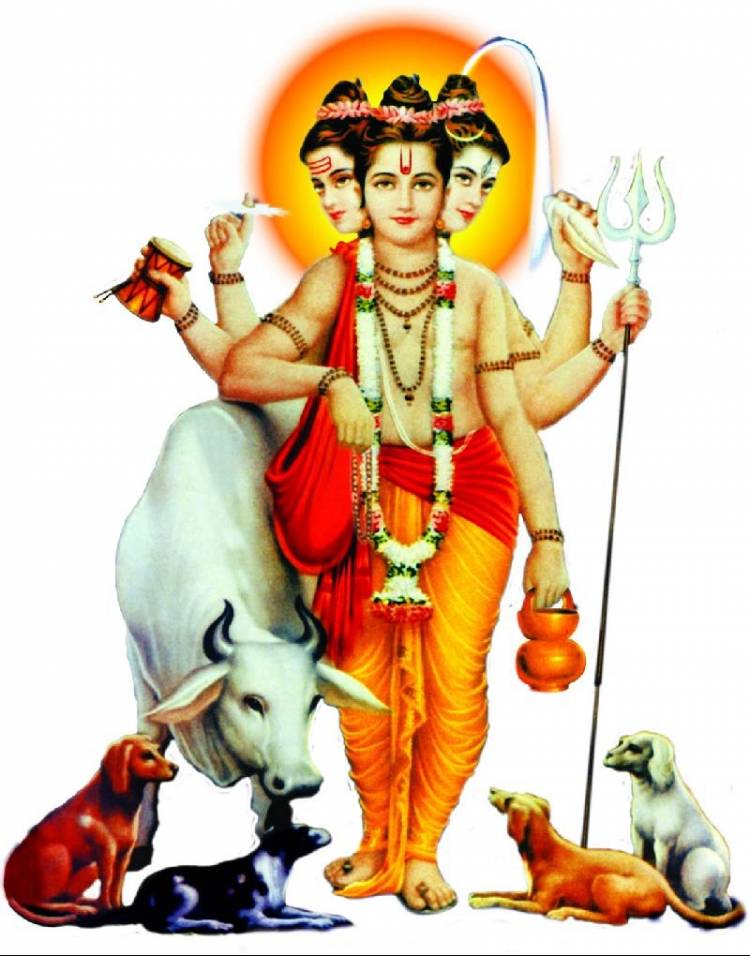 taken the examples of 24 elements or Gurus who provided him the necessary ammunition to lead a spiritual life and also lead him to the salvation. Earth, Air, Sky, Water, Fire, Moon, Sun, Pigeon, Boa constrictor, Sea, Moth, Bee, Elephant, Honey-thief, Deer, Fish, A Harlot named Pingala, Osprey, Boy, Maiden, Arrow-maker, Snake, Spider and Insect were his twenty-four gurus who provided the wisdom to realize that all things follow the natural divine law universally accepted. He learned from earth two virtues of forgiveness and doing good to others. From air he learned the quality of nonattachment and stainlessness. From the sea he learned that although the sea is very large, it does not even allow a small dry leaf landing on its surface to stay there. Instead, the sea drives it away to the shore. If the sea had not always done so, it would have dried up like a tank by now. In the same way, however great a tapasvin or yogi might be, he should not allow even the smallest desire or agitation to enter his mind. He learned from honeybee to collect little bit of nectar going from one flower to another without causing any flower to shrivel. He realized that he should study all the scriptures, grasp the knowledge skillfully and use it in his search for the Self.
taken the examples of 24 elements or Gurus who provided him the necessary ammunition to lead a spiritual life and also lead him to the salvation. Earth, Air, Sky, Water, Fire, Moon, Sun, Pigeon, Boa constrictor, Sea, Moth, Bee, Elephant, Honey-thief, Deer, Fish, A Harlot named Pingala, Osprey, Boy, Maiden, Arrow-maker, Snake, Spider and Insect were his twenty-four gurus who provided the wisdom to realize that all things follow the natural divine law universally accepted. He learned from earth two virtues of forgiveness and doing good to others. From air he learned the quality of nonattachment and stainlessness. From the sea he learned that although the sea is very large, it does not even allow a small dry leaf landing on its surface to stay there. Instead, the sea drives it away to the shore. If the sea had not always done so, it would have dried up like a tank by now. In the same way, however great a tapasvin or yogi might be, he should not allow even the smallest desire or agitation to enter his mind. He learned from honeybee to collect little bit of nectar going from one flower to another without causing any flower to shrivel. He realized that he should study all the scriptures, grasp the knowledge skillfully and use it in his search for the Self.
Swami Prabhavananda argued based on the Upanishads, which comprise the foundations of Indian culture, that the ultimate reality in this world is the universal spirit, which lies deep within us. Often it remains so deep within us that we are unaware of its existence. Hence, we falsely imagine that we are individuals composed only of body, senses and mind. We imagine further that this individual being has a separate and independent existence, whereas in fact, it is only an appearance—a light upon a screen, the source of which is the spirit that we do not see. “The little space within the heart is as great as the vast universe. The heavens and the earth are there, and the sun and the moon and the stars. Fire and lightening and winds are there, and all that now is and all that is not.”
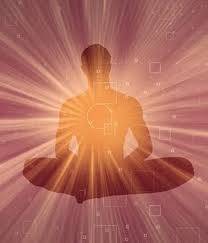 The process of realizing the spirit for what it is (the reality) and our individual being for what it is (a mere appearance) is the process of spiritual growth (Prabhavananda 1960). When a person is aware of this reality, he or she begins to feel that, for instance, backbiting a colleague is a denigration of himself or herself. Cheating, lying or concealing for selfish gain at someone else’s expense is really harm done to oneself. Hating someone else is hating oneself (Chakraborty 1995: 25).
The process of realizing the spirit for what it is (the reality) and our individual being for what it is (a mere appearance) is the process of spiritual growth (Prabhavananda 1960). When a person is aware of this reality, he or she begins to feel that, for instance, backbiting a colleague is a denigration of himself or herself. Cheating, lying or concealing for selfish gain at someone else’s expense is really harm done to oneself. Hating someone else is hating oneself (Chakraborty 1995: 25).
Those who are high on spirituality or those who perceive their oneness with others can be characterized by certain qualities. Spirituality or oneness makes individuals friendly and compassionate, and love all living beings. When people see no difference between themselves and others, they cannot be prejudiced or biased with respect to one particular person and will, thus, be fair to all. Oneness involves sympathy, empathy and identification not only with the feelings of others, but also with their goals and objectives. Spirituality is characterized by sensitivity, such that the person can identify with the feelings, needs, demands and aspirations of people around.
Why Spirituality is important
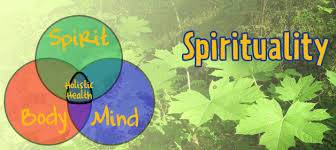 Whenever we talk about spirituality, we describe our perception, attitude and desire to know God through the inner journey to awaken the light within the self. In this process one would be discerning the godlike qualities such as love, compassion, forgiveness, gratitude, kindness, ananda (bliss), and truth. According to Wayne Teasdale (The Mystic Heart) “The divine calls us all into being out of itself. We are meant for it: That is the point of the spiritual journey. The journey puts us on the road to realizing and actualizing who we really are in our ultimate being. Enlightenment is the awakening to our identity as boundless awareness, but it is incomplete unless our compassion, sensitivity, and love are similarly awakened and actualized in our lives and relationships … Awakening to and developing compassion, sensitivity, and love is thus also part of the spiritual journey.”
Whenever we talk about spirituality, we describe our perception, attitude and desire to know God through the inner journey to awaken the light within the self. In this process one would be discerning the godlike qualities such as love, compassion, forgiveness, gratitude, kindness, ananda (bliss), and truth. According to Wayne Teasdale (The Mystic Heart) “The divine calls us all into being out of itself. We are meant for it: That is the point of the spiritual journey. The journey puts us on the road to realizing and actualizing who we really are in our ultimate being. Enlightenment is the awakening to our identity as boundless awareness, but it is incomplete unless our compassion, sensitivity, and love are similarly awakened and actualized in our lives and relationships … Awakening to and developing compassion, sensitivity, and love is thus also part of the spiritual journey.”
Scriptures clearly stated that one can embark on the spiritual journey provided he understands the permanence of the self and renounce the path of violence. "The wise who knows the Self as 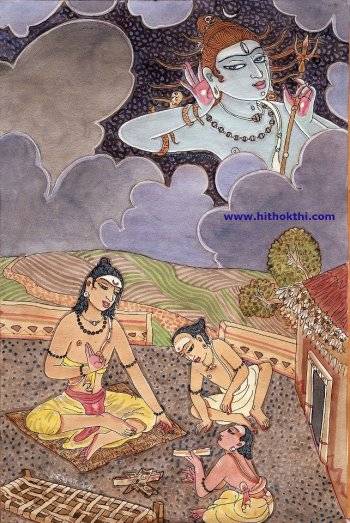 bodiless within the bodies, as unchanging among changing things, as great and omnipresent, does never grieve. That self cannot be gained by the Veda, nor by understanding, nor by much learning. He whom the Self chooses, by him the Self can be gained. The Self chooses him (his body) as his own. But he who has not first turned away from his wickedness, who is not tranquil, and subdued, or whose mind is not at rest, he can never obtain the Self (even) by knowledge.” Katha Upanishad 1.2.22-24
bodiless within the bodies, as unchanging among changing things, as great and omnipresent, does never grieve. That self cannot be gained by the Veda, nor by understanding, nor by much learning. He whom the Self chooses, by him the Self can be gained. The Self chooses him (his body) as his own. But he who has not first turned away from his wickedness, who is not tranquil, and subdued, or whose mind is not at rest, he can never obtain the Self (even) by knowledge.” Katha Upanishad 1.2.22-24
Spiritual approach is the key to avert human tragedy, mitigate terror and violence across the world, alleviate the natural disasters, ease the tensions across the nations, bridge the gap between religions, and establish world peace. There is going to be a long journey to convince all the religions to pursue the virtue of universal peace and harmony without resorting to the ideology of dominance, religious conversion, demeaning other faiths, and tarnishing the universal freedom and liberty. There is a lesson to learn from Bhagavad Gita (6:26-28) which says: “And whenever the mind unsteady and restless strays away from the Spirit, let him ever and forever lead it again to the Spirit. Thus joy supreme comes to the Yogi whose heart is still, whose passions are peace, who is pure from sin, who is one with Brahman, with God. The Yogi who pure from sin ever prays in this harmony of soul soon feels the joy of Eternity, the infinite joy of union with God.”
Spirituality is associated with love, compassion, ahimsa (non-violence), kindness and consideration for others. Based on the review of the responses to over 30 surveys, Ryan Howell listed five unique characteristics of spiritual people. Being gracious, compassionate, optimistic, pursuing of self-actualization and building of lasting memories are the unique characteristics of spiritual people. In The Art of Happiness, His Holiness Dalai Lama defines compassion in this way: “Compassion can be roughly defined in terms of a state of mind that is nonviolent, non-harming, and nonaggressive. It is a mental attitude based on the wish for others to be free of their suffering and is associated with a sense of commitment, responsibility, and respect towards the other” (114). He further spells out, ― ”In developing compassion, perhaps one could begin with the wish that oneself be free of suffering, and then take that natural feeling towards oneself and cultivate it, enhance it, and extend it out to include and embrace others” (114).
Steven Southwick’s book, Resilience: The Science of Mastering Life’s Greatest Challenges, describes how some people overcome trauma—such as abduction, war, and imprisonment—by seeking comfort in spirituality or religion. He gives examples where spiritual people find ways to “meet the challenge and continue with purposeful lives…they bounce back and carry on.” Having a strong spiritual outlook may help you find meaning in life’s difficult circumstances. Southwick describes the story of a woman who overcame the post-traumatic stress following an abduction and rape by believing that her trauma “served as a platform for her personal development, forcing her to evaluate her life and gradually change it for the better. She credits her ability to move forward with her life…to her dedication to spirituality.”
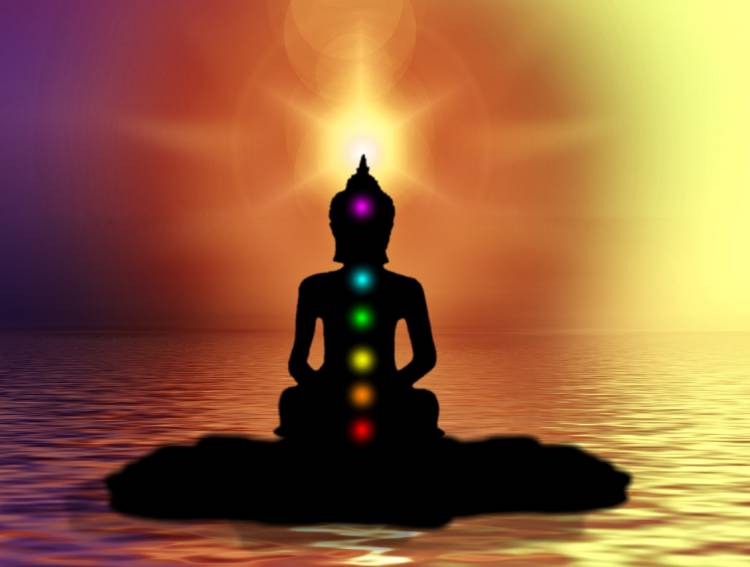 Over the decades, spirituality is enjoying positive evaluation with increased number of people embracing the ideals while the numbers of people believing in religion is declining. David John Tracy states, “If religion is in serious trouble, spirituality is in the ascendancy and the irony of this situation evokes puzzlement and anxiety in the religious establishment, scrutiny among theologians, and justification among those who have traded the religion of their past for the spirituality of their present.” There is more talk about spirituality and how to relate oneself and one’s self development. The spiritual quest is slowly but definitely establishing firm roots in all the societies with the decline of Church attendance is Europe and USA.
Over the decades, spirituality is enjoying positive evaluation with increased number of people embracing the ideals while the numbers of people believing in religion is declining. David John Tracy states, “If religion is in serious trouble, spirituality is in the ascendancy and the irony of this situation evokes puzzlement and anxiety in the religious establishment, scrutiny among theologians, and justification among those who have traded the religion of their past for the spirituality of their present.” There is more talk about spirituality and how to relate oneself and one’s self development. The spiritual quest is slowly but definitely establishing firm roots in all the societies with the decline of Church attendance is Europe and USA.
Spiritual revolution is taking place all across the globe and spreading without any support or propagation from any organizational structure. Spirituality is transforming all sections of the population whether they are religious or secular, theists or atheists, educated or uneducated, young or old, men or women, and married or unmarried. There is an increased realization among people, especially younger generation, that the society is in need of rejuvenation and the spirituality is the key that can unlock the vacuum for the development of personal, professional, social, cultural and educational growth for future survival.
Majority of the scholars in the Western societies were concerned with the religion, worldly matters and pragmatism. They have taken an objective and critical attitude toward spirituality that may have included the concepts of reincarnation, karma theory and the true nature of human existence. But the result is disappointing. In his lecture, Origin of the Vedanta, Max Muller quotes the remarks of the German philosopher, Frederick Schlegel:
 'It cannot be denied that the early Indians possessed a knowledge of the true God; all their writings are replete with sentiments and expressions, noble, clear, and severely grand, as deeply conceived and reverentially expressed as in any human language in which men have spoken of their God. . . Even the loftiest philosophy of the Europeans, the idealism of reason, as it is set forth by the Greek philosophers, appears, in comparison with the abundant light and vigour of Oriental idealism, like a feeble Promethean spark in the full flood of heavenly glory of the noonday sun-faltering and feeble, and ever ready to be extinguished.' And with regard more especially to the Vedanta Philosophy, he says: 'The divine origin of man is continually inculcated to stimulate his efforts to return, to animate him in the struggle, and incite him to consider a reunion and reincorporation with divinity as the one primary object of every action and exertion.' (Three Lectures on the Vedanta Philosophy, pp. 10-11.)
'It cannot be denied that the early Indians possessed a knowledge of the true God; all their writings are replete with sentiments and expressions, noble, clear, and severely grand, as deeply conceived and reverentially expressed as in any human language in which men have spoken of their God. . . Even the loftiest philosophy of the Europeans, the idealism of reason, as it is set forth by the Greek philosophers, appears, in comparison with the abundant light and vigour of Oriental idealism, like a feeble Promethean spark in the full flood of heavenly glory of the noonday sun-faltering and feeble, and ever ready to be extinguished.' And with regard more especially to the Vedanta Philosophy, he says: 'The divine origin of man is continually inculcated to stimulate his efforts to return, to animate him in the struggle, and incite him to consider a reunion and reincorporation with divinity as the one primary object of every action and exertion.' (Three Lectures on the Vedanta Philosophy, pp. 10-11.)
The impact of this spiritual revolution is far reaching as it shakes the very foundation of Christianity that believed in the supremacy of the teachings of Jesus and the dominance of the clergy who controlled the mind and bod of their congregation.
As far back as 1875, Henry Steel Olcott, one of the founders of Theosophical Society was looking toward East for to find answers for the modern ills by tapping into the well of Ancient Wisdom. He was looking for alternatives to the Christian dogma and fundamentalism and the liberal skeptical scientific minds and finding answers in the profound scientific attainments of ancient India. He stated that, “Society has reached a point where something must be done; it is for us to indicate where that something may be found.”
What is spirit?
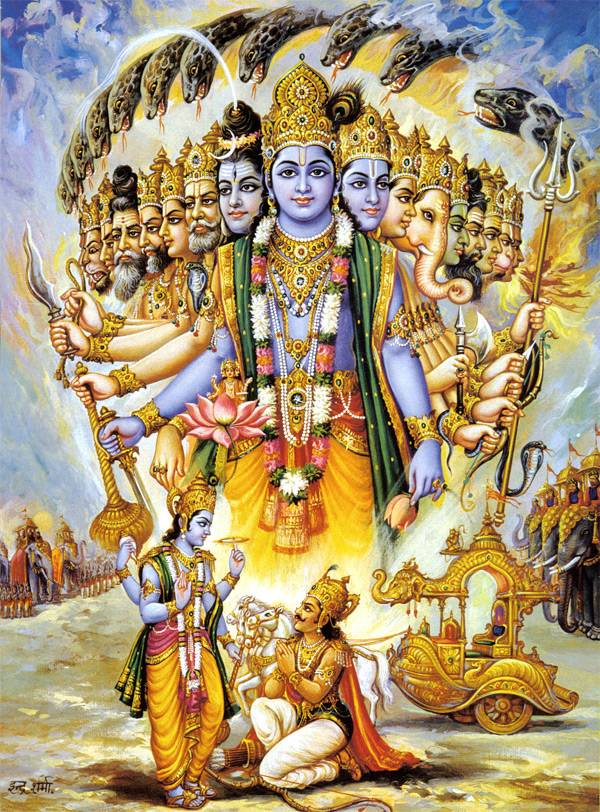 A Hindu believes that an individual is a spirit more than a matter or a body. But somehow or other it has got itself bound down by matter, and thinks of itself as matter. Many Hindu scriptures explains the myth that matter is the solution for modern ills.
A Hindu believes that an individual is a spirit more than a matter or a body. But somehow or other it has got itself bound down by matter, and thinks of itself as matter. Many Hindu scriptures explains the myth that matter is the solution for modern ills.
The soul is eternal and immortal, perfect, infinite, ever blissful, and transcends time and space. Death means change of the center to another body. It never dies. It moved to another center. Lord Krishna describes that eternal essence or permanent nature of soul as follows:
Whosoever knows this (eternal essence) to be imperishable, eternal, birth less and changeless, how can that individual, O Paartha, slay or cause anyone to be slain? (2:21)
Weapons cannot pierce this (the eternal essence), fire cannot burn this, water cannot wet this, and wind cannot dry this. (2:23)
This is uncleavable, incombustible, and cannot be wetted or dried. It is eternal, all-pervading, stable, immovable and everlasting. (2:24)
This (eternal essence) is imperceptible, this is incomprehensible, this is unchanging, it is said. Therefore, having known this, it is not worthy of grief. (2:25)
Atman is the inmost Self or Spirit of man. Atman is the fundamental, ultimate, eternal, immutable pure consciousness. Thus, it appears that Brahman is the ultimate reality behind all world-objects and Atman is pure spirit in all beings. Truly speaking, both Brahman and Atman are not different realities. They are identical. Only for our basic understanding, they are referred to separately. They are the eternal, all-pervading realities underlying all existence. They are two different ‘labels’ for one and the same reality behind all the objects, all matter, all beings of the universe.
“The Self pervades. Bright, without body, free from harm, unmuscular, pure, exempt from evil, wise, equipped with Mind, encompassing, Self-existent, appropriately he assigned values throughout eternity” (Īśā-upanishad, 8).
Where can we find this soul/atma
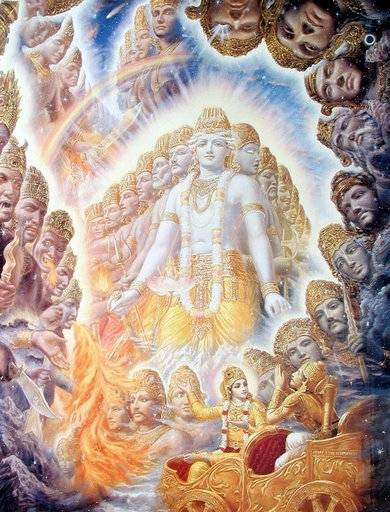 According to Katha Upanishad, “One who is smaller than the atom and (at the same time) greater than the greatest (which is the universe) is the Atma that remains in the hrudaya guha (heart's cave)” (1.2.20). The soul is a particle that is the size of a thumb while some other scriptures talk of varying sizes. Irrespective of the size, it is located in the heart chakra. But the individual atma reflects the same qualities as Paramatma. They are one and the same. They are not separate entities. But, Swami Vivekananda, “It is impossible to find God outside of ourselves. Our own souls contribute all of the divinity that is outside of us. We are the greatest temple. The objectification is only a faint imitation of what we see within ourselves.”
According to Katha Upanishad, “One who is smaller than the atom and (at the same time) greater than the greatest (which is the universe) is the Atma that remains in the hrudaya guha (heart's cave)” (1.2.20). The soul is a particle that is the size of a thumb while some other scriptures talk of varying sizes. Irrespective of the size, it is located in the heart chakra. But the individual atma reflects the same qualities as Paramatma. They are one and the same. They are not separate entities. But, Swami Vivekananda, “It is impossible to find God outside of ourselves. Our own souls contribute all of the divinity that is outside of us. We are the greatest temple. The objectification is only a faint imitation of what we see within ourselves.”
Alain Danielou has studied extensively the relationship between Atma (Self) and Brahman (Supersoul). It is through yoga he was able to connect the mind, body and soul. In fact, he says, one can understand the whole universe by understanding one’s own self. “It is by studying the microcosm that we can understand macrocosm; it is through our own impermanent being that we can reach the Universal Being. It is in the cavern of our heart that we can realize the immensity of spaces, and by controlling our own vital rhythms that we can escape the power of time. It is by reaching the source of life that we can escape the power of death. It is by exploring the unknown spheres within ourselves that we can visit the celestial and infernal worlds.”
Part 2 of the article will be forthcoming soon
DONATIONS
As many of you know that SaveTemple Office was opened in June 2012 in Hyderabad. Office is located in Khairatabad. Four full time employees are working on the update of our website, Aalayavani Web Radio, Aalayavani magazine, conducting various activities to preserve and protect Hindu Temples and Culture. Our budget is approximately 2 lakh rupees per month. We request your generous donation to conduct activities to promote unity among Hindus and restore the glory of Hinduism.
Please DONATE. Your donations are appreciated to continue the work.
NOTE: GHHF is exempt from federal income tax under section 501 (c) 3 of the Internal Revenue code. Our tax ID # 41-2258630
Donate at: https://www.savetemples.org (click ‘Donate’ button on right side).
Where to send your DONATIONS?
Global Hindu Heritage Foundation
14726 Harmony Lane, Frisco, TX 75035.
Your donations are tax deductible. Our Tax ID: # 41-2258630
Any questions, call: Prakasarao Velagapudi
Please subscribe to Save Temples Telegram channel at https://t.me/savetemples
GHHF Board of Directors:
Prakasarao Velagapudi PhD, ( cell), ( home); (; ); Satya Dosapati (); (); (); Vinay Boppana (248-842-6964); (); (); (); (); (); (); (); (); Murali Alloju MD (703-953-1122); Veeraiah Choudary Perni MD (330-646-8004); Vishnu Kalidindi MD; Srivas Chebrolu MD; Avadesh Agarwal; Sudheer Gurram MD; Rajendrarao Gavini MD; Srinath Vattam MD, Ravi Gandhi, Ramadevi Vadali, Kishore Kancharla, Ranjith Kumar Rikkala; Satish Kodeboyina; and Dr. Ghazal Srinivas, Honorary Brand Ambassador.
GHHF Dallas Core Group
(); ); Srinivas Pamidimukkala (); (); (); (); (); (}; (); (); (); (); (); (); (); (); (); (); Sitaram Panchagnula (714-322-3430); Vasanth Suri (408-239-3436); Phani Aduri (214-774-2139); Konda Srikanth (214-500-5890); Siva Agnoor (214-542-661).











 Urgent support needed for Bangladesh Hindus
Urgent support needed for Bangladesh Hindus 







